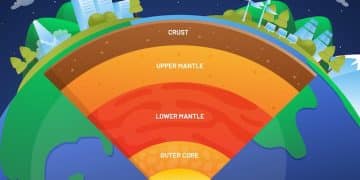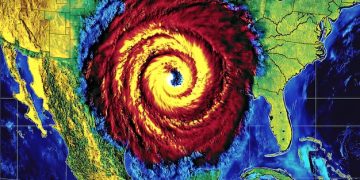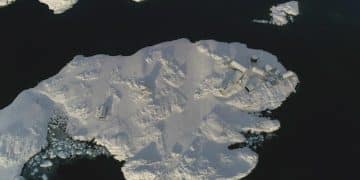2°C Climate Rise: Impacts on US Coastal Communities

Advertisements
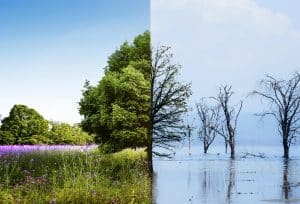
A 2-degree Celsius increase in global temperatures, a threshold scientists warn against, poses significant, unavoidable challenges for US coastal communities, leading to amplified sea-level rise, intensified extreme weather events, and severe ecological and economic disruptions.
Advertisements
Understanding the science of climate change, particularly the implications of a 2-degree Celsius increase in global temperatures, will significantly affect US coastal communities.
It is not merely an abstract figure but a critical tipping point with tangible, localized impacts that demand immediate attention and adaptation strategies.
Advertisements
This seemingly small temperature shift can unleash a cascade of serious environmental and socio-economic consequences for millions of Americans living along our nation’s extensive coastlines.
The Science Behind a 2-Degree Celsius Rise
The concept of a 2-degree Celsius global temperature increase is a benchmark established by the international scientific community and policymakers.
It represents a level beyond which the risks of severe and irreversible impacts of climate change are considered to escalate significantly.
This threshold isn’t arbitrary; it is rooted in extensive climate modeling and historical data analysis, reflecting a consensus on the need for urgent action.
Understanding Global Warming Potential
Global warming describes the long-term heating of Earth’s climate system observed since the pre-industrial period (between 1850 and 1900) due to human activities, primarily fossil fuel burning, which increases heat-trapping greenhouse gas levels in Earth’s atmosphere.
The 2-degree target is an average; regional warming can be far more extreme. The Intergovernmental Panel on Climate Change (IPCC) provides comprehensive reports that detail these mechanisms.
- Greenhouse gases: Carbon dioxide, methane, and nitrous oxide trap heat.
- Industrial Revolution: Marked the beginning of significant human-induced emissions.
- Feedback loops: Warming can release more greenhouse gases, accelerating the process.
- Paris Agreement: Aims to keep warming “well below” 2 degrees Celsius, ideally 1.5 degrees.
The science indicates that even a partial achievement of this limit will still result in notable changes.
Scientists use complex climate models and paleoclimate data to project future scenarios, always emphasizing probabilities rather than certainties due to the dynamic nature of Earth’s systems.
Why 2 Degrees Celsius is a Critical Threshold
Exceeding the 2-degree Celsius threshold is projected to push Earth’s climate system beyond certain tipping points, leading to more abrupt and less predictable changes.
These changes are not just linear extensions of current trends; they involve non-linear responses that could trigger a cascade of events with global repercussions.
For coastal communities, this means an acceleration of existing threats and the emergence of new ones.
It’s vital to recognize that the planet has already warmed by approximately 1.2 degrees Celsius above pre-industrial levels.
This means we are already experiencing the initial impacts, and every fraction of a degree further exacerbates the situation.
The difference between 1.5 and 2 degrees Celsius, while seemingly small, can mean vastly different futures for vulnerable ecosystems and human populations, particularly those along the coast.
Rising Sea Levels: A Direct Consequence
One of the most immediate and impactful consequences of a 2-degree Celsius global temperature increase for US coastal communities is accelerated sea-level rise.
This phenomenon is driven by two primary factors: thermal expansion of ocean water and the melting of glaciers and ice sheets. Both processes are directly amplified by higher global temperatures.
Thermal Expansion and Melting Ice
As ocean waters absorb excess heat from the atmosphere, they expand, taking up more space. This thermal expansion accounts for a significant portion of observed sea-level rise.
Simultaneously, rising air and ocean temperatures are causing glaciers and ice sheets in Greenland and Antarctica to melt at an unprecedented rate, adding vast quantities of water to the oceans.
These processes have been accelerating in recent decades, and a 2-degree increase would lock in even greater future rises.
- Thermal expansion: Oceans absorb over 90% of the excess heat from global warming.
- Glacial melt: Mountain glaciers are receding globally, contributing to sea-level rise.
- Ice sheet contributions: Greenland and Antarctic ice sheets are major contributors.
- Global average vs. local: Sea-level rise varies regionally due to ocean currents, land subsidence, and gravitational effects.
The rate of sea-level rise is often not uniform across the globe; even within the US, coastal regions can experience different rates due to local geological factors and ocean dynamics.
Therefore, while global averages provide a baseline, local projections are crucial for effective planning.
Vulnerability of US Coastal Regions
The US possesses an extensive and diverse coastline, home to numerous large metropolitan areas, critical infrastructure, and unique ecosystems. Many of these areas are low-lying and thus inherently vulnerable to rising sea levels.
Communities in states like Florida, Louisiana, and parts of the Mid-Atlantic are already grappling with “nuisance flooding” – frequent, minor tidal flooding that disrupts daily life and infrastructure.
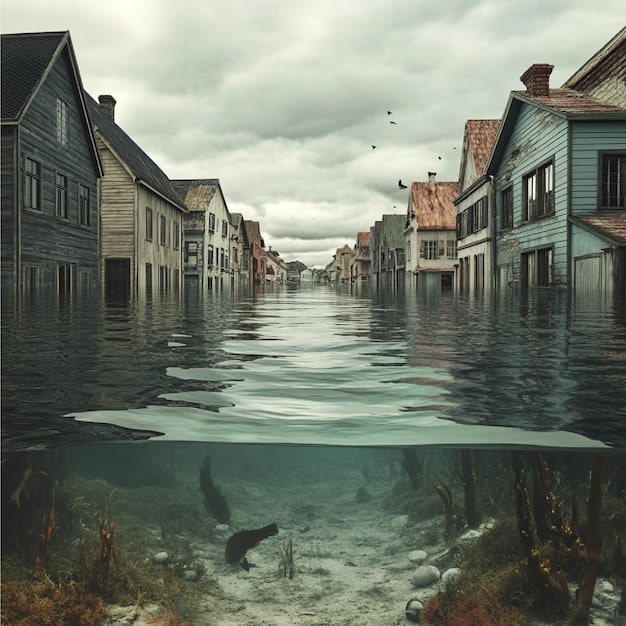
A 2-degree Celsius warming scenario is predicted to exacerbate these issues significantly, leading to more frequent and severe inundation.
This isn’t just about beachfront properties; it affects freshwater supplies due to saltwater intrusion, damages roads and bridges, contaminates agricultural lands, and strains stormwater systems.
The long-term implications include potential displacement of populations and a restructuring of coastal economies.
For instance, the Chesapeake Bay region is experiencing some of the highest rates of relative sea-level rise in the US, a combination of global sea-level rise and regional land subsidence.
Miami, Florida, built on porous limestone, faces unique challenges as saltwater can intrude not only from the coast but also from below, threatening groundwater supplies.
Extreme Weather Events and Their Magnification
Beyond gradual sea-level rise, a 2-degree Celsius temperature increase is expected to intensify the frequency and severity of extreme weather events, posing another grave threat to US coastal communities.
This includes more powerful hurricanes, increased rainfall, and prolonged heatwaves, all of which stress infrastructure and human systems.
Hurricanes and Coastal Storms
Warmer ocean temperatures provide more energy for tropical storms and hurricanes, potentially leading to increased storm intensity, higher wind speeds, and greater rainfall amounts.
While the frequency of hurricanes might not necessarily increase globally, the proportion of category 4 and 5 storms is projected to rise.
These more powerful storms generate larger storm surges, which, combined with higher baseline sea levels, can cause catastrophic flooding far inland from the coast.
The Gulf Coast and the Southeast US are particularly susceptible to these changes.
Recent hurricane seasons have already demonstrated the devastating combination of intense storms and high tides, leading to billions of dollars in damages and significant loss of life.
These events are not isolated incidents but part of an emerging pattern influenced by a warming climate.
- Increased storm intensity: Warmer waters fuel more powerful hurricanes.
- Larger storm surges: Higher sea levels amplify the destructive power of surges.
- Heavy rainfall: A warmer atmosphere holds more moisture, leading to torrential downpours.
- Economic disruption: Billions in damage to infrastructure, property, and businesses.
The infrastructure in many coastal areas was not designed to withstand such extreme and frequent events.
This necessitates massive investments in protective measures, from improved seawalls and natural barriers to updated building codes and early warning systems.
Increased Rainfall and Inland Flooding
A warmer atmosphere holds more moisture, leading to an increased potential for heavy precipitation events.
Even outside of tropical storms, coastal communities can experience more frequent and intense rainfall, overwhelming storm drains, rivers, and urban infrastructure.
This “sunny day flooding” or “nuisance flooding” becomes more severe and frequent, disrupting transportation, commerce, and daily life.
Furthermore, coastal areas are often intersected by rivers and estuaries, meaning that heavy rainfall events occurring far upstream can exacerbate flooding closer to the coast.
This complex interplay of oceanic and terrestrial water systems highlights the interconnectedness of climate impacts, requiring holistic approaches to mitigation and adaptation.
Ecological and Environmental Degradation
The impacts of a 2-degree Celsius warming extend far beyond human infrastructure, profoundly affecting the delicate ecosystems that characterize US coastal environments.
These ecological shifts have cascading effects on biodiversity, natural protective barriers, and the resources communities depend on.
Threats to Coastal Ecosystems
Rising sea levels and increased storm intensity directly threaten unique coastal habitats such as salt marshes, mangrove forests, and coral reefs.
Salt marshes and mangroves, crucial for stabilizing shorelines and providing natural buffers against storms, are particularly vulnerable.
As sea levels rise, these ecosystems may not be able to migrate inland fast enough due to human development blocking their natural retreat. This “coastal squeeze” leads to their degradation and loss, removing vital natural protections.
Coral reefs, predominantly found in tropical US waters like Florida and Hawaii, face the dual threat of ocean warming and ocean acidification.
Warmer waters cause coral bleaching events, where corals expel their symbiotic algae, often leading to their death.
Ocean acidification, a result of the oceans absorbing excess carbon dioxide, reduces the availability of carbonate ions, making it harder for corals and other shell-forming organisms to build their skeletons and shells.
The loss of these ecosystems has severe implications for marine biodiversity and coastal fisheries.
- Habitat loss: Marshes and mangroves are submerged or squeezed.
- Biodiversity decline: Loss of critical nursery and feeding grounds.
- Ocean acidification: Harms shell-forming organisms and coral reefs.
- Fisheries impact: Disruption of marine food webs affects fishing industries.
These ecosystems are not just biological assets; they provide essential services, including water filtration, carbon sequestration, and recreational opportunities, all of which are diminished by a warming climate.
Their degradation represents a significant loss for both the environment and the human communities reliant on these services.
Impact on Freshwater Resources
Coastal freshwater sources are increasingly at risk from saltwater intrusion as sea levels rise.
Aquifers, particularly in low-lying coastal areas, can become contaminated by saline water, rendering them unsuitable for drinking, agriculture, and industrial use.
This issue is particularly acute in regions heavily dependent on groundwater, forcing communities to seek alternative, often more expensive, freshwater supplies.
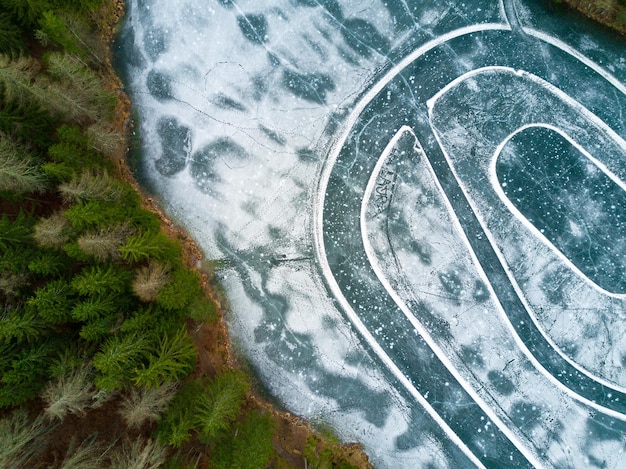
Compounded with changing rainfall patterns, which can lead to longer droughts or more intense floods, the availability and quality of freshwater in coastal regions become increasingly uncertain.
Managing these vital resources effectively in a 2-degree warmer world will be a major challenge for local and state governments.
Economic and Social Repercussions
The environmental impacts of a 2-degree Celsius temperature increase inevitably translate into profound economic and social repercussions for US coastal communities.
These challenges range from property devaluation and infrastructure damage to public health crises and population displacement, creating a complex web of interconnected problems.
Economic Disruptions and Infrastructure Damage
Rising sea levels and intensified storms will cause billions of dollars in damage to coastal infrastructure, including roads, bridges, public utilities, and critical services like power grids and wastewater treatment plants.
The costs of repairing, relocating, or hardening this infrastructure will be astronomical, straining local and national budgets. Property values in flood-prone areas are likely to decline, affecting local tax bases and household wealth.
Industries heavily reliant on coastal access, such as tourism, fishing, and shipping, will face significant disruptions. Beaches, a major draw for tourists, will erode. Fisheries will be impacted by changes in marine ecosystems.
Ports and shipping lanes will contend with more frequent closures and the need for costly upgrades to remain operational in a changing climate. These economic shifts can lead to job losses and diminished prosperity for coastal residents.
- Infrastructure repair: Roads, ports, and power grids damaged.
- Property devaluation: Homes and businesses in coastal zones lose value.
- Tourism decline: Eroding beaches and damaged attractions deter visitors.
- Fisheries impact: Ecosystem changes reduce fish stocks.
Moreover, the cost of flood insurance is predicted to skyrocket in high-risk areas, making it unaffordable for many homeowners and businesses, further exacerbating economic inequalities and making recovery from climate-induced disasters more challenging.
Public Health and Displacement
The health of coastal communities will also be compromised. Increased heatwaves pose risks of heat stroke and other heat-related illnesses, especially for vulnerable populations.
Changes in water quality, due to saltwater intrusion or contamination from storm-related flooding, can lead to outbreaks of waterborne diseases.
The mental health impacts of repeated displacement and loss from extreme weather events are also a growing concern.
Ultimately, some low-lying coastal areas may become uninhabitable, leading to managed retreat or forced migration.
This planned or unplanned displacement of populations raises complex social and ethical questions, straining community resources and potentially leading to cultural and social disruption.
Preparing for such scenarios requires foresight and strategic planning from all levels of government.
Adaptation and Mitigation Strategies
Addressing the formidable challenges posed by a 2-degree Celsius temperature increase on US coastal communities requires a multi-faceted approach encompassing both adaptation and mitigation strategies.
While mitigation aims to reduce greenhouse gas emissions, adaptation focuses on building resilience to the unavoidable impacts.
Building Resilience and Protecting Coasts
Adaptation measures for coastal communities include physical defenses and ecosystem-based approaches.
Hard infrastructure such as seawalls, levees, and storm surge barriers can protect critical assets, but they are costly and can have unintended ecological consequences.
Softer, nature-based solutions, like restoring wetlands, oyster reefs, and dune systems, offer ecological benefits while enhancing coastal protection.
Other vital adaptation strategies include elevating structures, improving drainage systems, implementing stricter building codes, and developing comprehensive land-use planning that accounts for future sea-level rise.
Community engagement and education are paramount, empowering residents to understand risks and participate in planning processes.
- Hard defenses: Seawalls and barriers protect infrastructure.
- Nature-based solutions: Wetlands and dunes offer ecological protection.
- Elevating structures: Reduces flood risk for individual properties.
- Land-use planning: Directs development away from high-risk areas.
The choice between different adaptation strategies often depends on local context, available resources, and community preferences. A combination of approaches, strategically implemented, is usually the most effective path forward.
The Imperative of Mitigation
While adaptation is crucial for coping with current and future impacts, mitigation remains the overarching imperative.
Reducing global greenhouse gas emissions is the only way to prevent temperatures from exceeding the 2-degree Celsius threshold and beyond.
This involves transitioning to renewable energy sources, improving energy efficiency, adopting sustainable land-use practices, and developing technologies for carbon capture.
International cooperation, national policies, and local initiatives all play a role in this global effort.
Every incremental reduction in emissions helps lessen the severity of future climate impacts, offering a better chance for coastal communities to thrive.
The intertwined nature of mitigation and adaptation means that success in one area supports efforts in the other.
Future Projections and Call to Action
The projections for US coastal communities under a 2-degree Celsius warming scenario paint a stark picture of increased risks and fundamental changes.
However, these projections are not destiny; they are warnings that can inform timely and decisive action. Understanding the pathways and potential outcomes is the first step toward building a more resilient future.
Long-Term Outlook
Even if global temperatures are ultimately stabilized at a 2-degree Celsius increase, sea levels will continue to rise for centuries due to the slow response of oceans and ice sheets to warming.
This means that coastal communities must prepare for a future where the coastline is a moving target, and flood risks continuously evolve.
Long-term planning must incorporate dynamic adaptation strategies that can adjust to these ongoing changes.
Moreover, the interconnected nature of global systems means that impacts beyond the US, such as climate-induced migration or global food supply disruptions, could also indirectly affect US coastal communities.
A holistic understanding of climate change as a systemic challenge, not just an environmental one, is essential for truly effective responses.
A Call for Integrated Action
The challenges facing US coastal communities due to a 2-degree Celsius temperature increase are immense, but they are not insurmountable with concerted effort.
Integrated action involving scientists, policymakers, urban planners, engineers, and community members is vital.
This requires robust scientific research, transparent communication of risks, equitable policy development, and sustained funding for both mitigation and adaptation.
The time for incremental changes has passed. Bold, transformative action is needed to protect these invaluable communities, economies, and ecosystems for future generations.
The fate of US coastal communities hinges on our collective ability to understand the science, acknowledge the risks, and act decisively today.
| Key Point | Brief Description |
|---|---|
| 🌡️ Global Temperature Threshold | A 2°C rise is a critical benchmark beyond which severe irreversible climate impacts are expected, accelerating current warming trends. |
| 🌊 Accelerated Sea-Level Rise | Thermal expansion and melting ice sheets will cause significant sea-level rise, threatening low-lying US coastal areas. |
| 🌪️ Intensified Extreme Weather | More powerful hurricanes and heavy rainfall events will increase coastal flooding and infrastructure damage. |
| 💰 Economic and Social Impacts | Property devaluation, infrastructure costs, public health risks, and potential displacement loom for coastal populations. |
Frequently Asked Questions About 2°C Warming and US Coasts
The primary drivers are thermal expansion of ocean water, as warmer water takes up more space, and the melting of glaciers and ice sheets, which add vast quantities of water into the oceans. Both processes accelerate significantly with higher global temperatures.
Warmer ocean temperatures provide more energy for tropical storms, leading to an increase in their intensity, wind speeds, and rainfall. While overall frequency might not change, the proportion of more powerful, destructive storms (Category 4 and 5) is projected to rise.
No, vulnerability varies significantly. Factors like local geology, land subsidence rates, existing infrastructure, and population density all influence how communities are affected. For instance, low-lying areas in Florida and Louisiana face distinct challenges compared to other regions.
Nature-based solutions use natural processes and ecosystems to reduce climate risks. Examples include restoring salt marshes, mangrove forests, and oyster reefs. These natural barriers can absorb storm surge energy, stabilize shorelines, and provide additional ecological benefits.
Significant ecological impacts include coastal habitat loss (e.g., salt marshes), increased ocean acidification harming coral reefs and shellfish, saltwater intrusion into freshwater aquifers, and disruptions to marine biodiversity and fisheries, affecting food webs and economic livelihoods.
Conclusion
The scientific consensus is clear: a 2°C Climate Rise marks a dangerous threshold with consequences that extend far beyond rising temperatures.
For US coastal communities, this tipping point could mean accelerating sea-level rise, more frequent and destructive hurricanes, and irreversible damage to ecosystems that millions depend on for survival and economic stability.
Research has shown that the difference between a 2°C Climate Rise and keeping warming below this limit is profound. Reports like Earth.org’s assessment highlight how food systems, biodiversity, and infrastructure face escalating risks.
At the same time, expert insights from MIT Climate stress why the 2°C Climate Rise became the internationally recognized benchmark for climate action, underscoring both its urgency and its global significance.
Ultimately, preparing for a future shaped by a potential 2°C Climate Rise demands both ambition and resilience.
Policymakers, businesses, and communities must translate science into action, strengthening coastal defenses, accelerating clean energy adoption, and advancing equitable adaptation strategies.
By acting decisively today, we can transform the looming risks of the 2°C Climate Rise into a catalyst for innovation and protection, ensuring a safer and more sustainable world for generations to come.
Liked the article?
